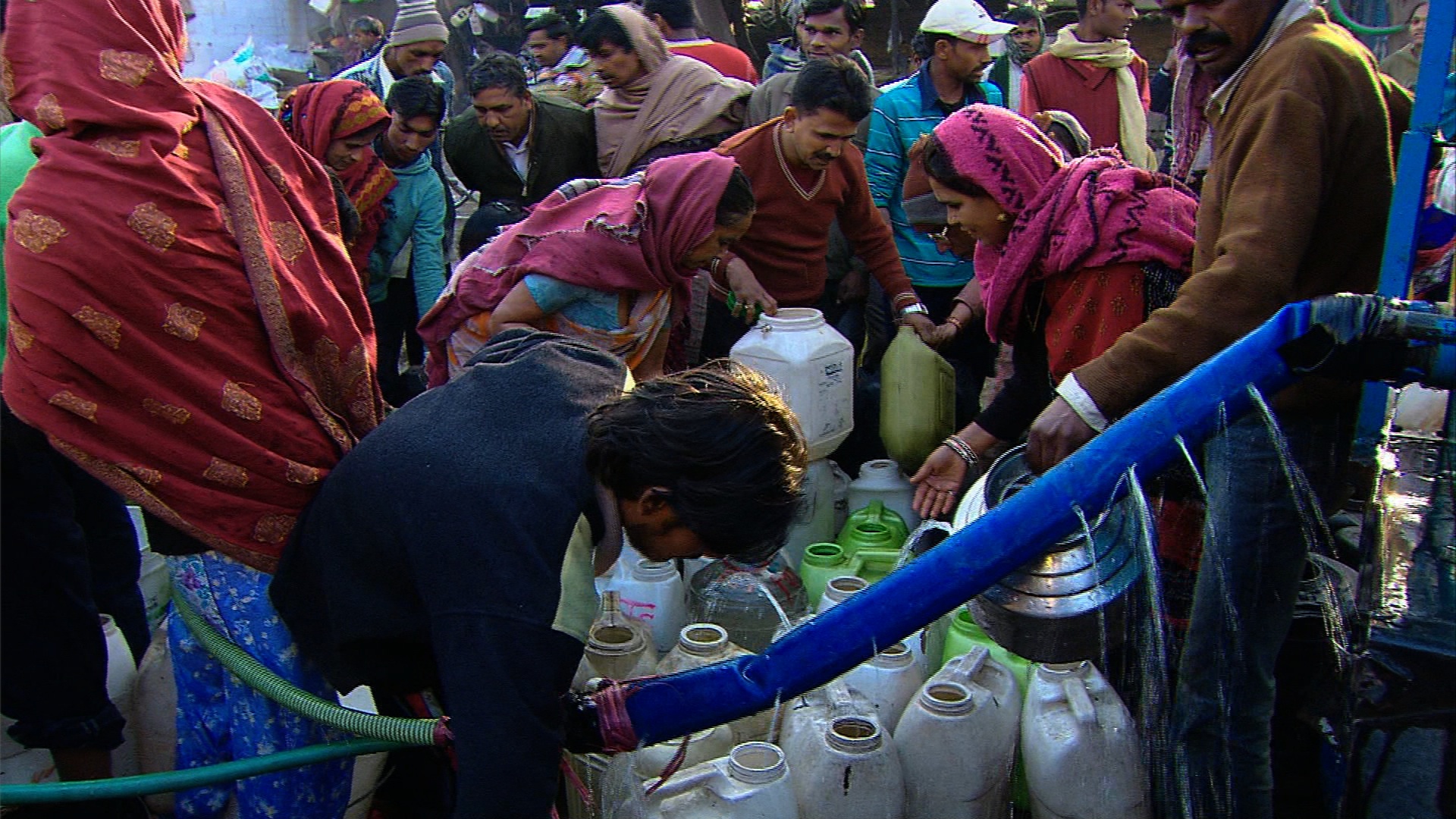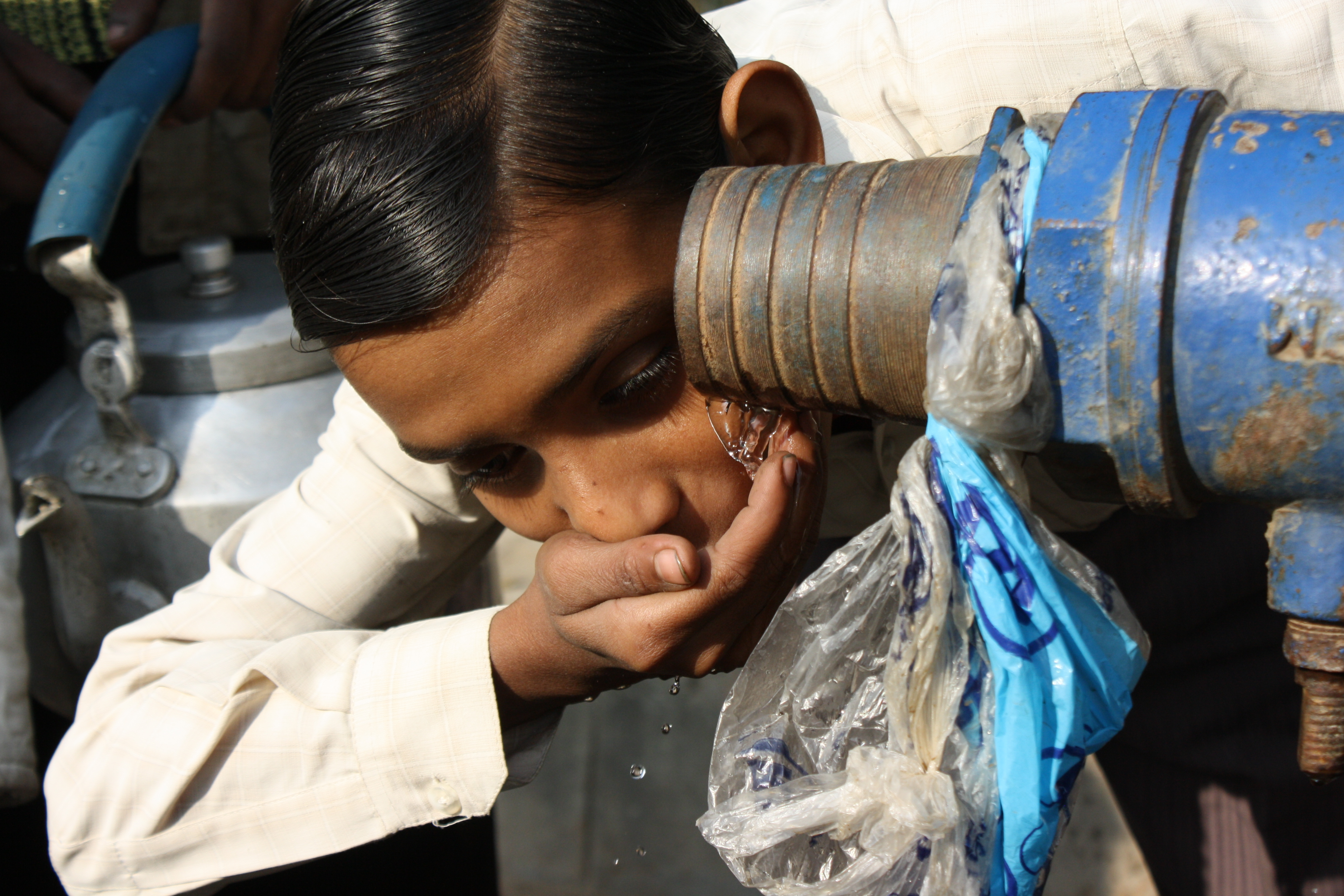
Right across from conservationist Jyothi Sharma's Delhi apartment in an upper middle class enclave is a sprawling slum. Her neighbors are migrants from rural areas who've come to find work as domestics across the street or as daily laborers in India's booming—and almost entirely urban—new economy. The annual influx adds anywhere from 500,000 to 700,000 new residents to India's capital which, at 16 million inhabitants is already well past its carrying capacity.
Drinking water for the slum dwellers comes daily—though not at any predictable time—in a municipal tanker. The scramble to get in line for this most basic need costs the average adult user four hours a day in productive time. Sharma's middle class enclave is only slightly better off. City water comes on for 45 minutes each day, mostly in an anemic trickle triggering a series of pumps to suck it into holding tanks.
The city's predicament is a product of indifference at all policy levels towards this most basic of life's needs—even in the face of surging demand and dwindling supplies of fresh water. Experts say it imperils both water and food security for what will soon be the world's most populous nation.
If we're going to see conflicts over water, Sharma predicts it will happen right outside her apartment. The day the tankers stop coming the folks from across the street will come after her own holding tanks, whose padlocks will prove no match for the thirsty mob.
The Pulitzer Center's reporting on population is made possible through support from the Wallace Global Fund.









